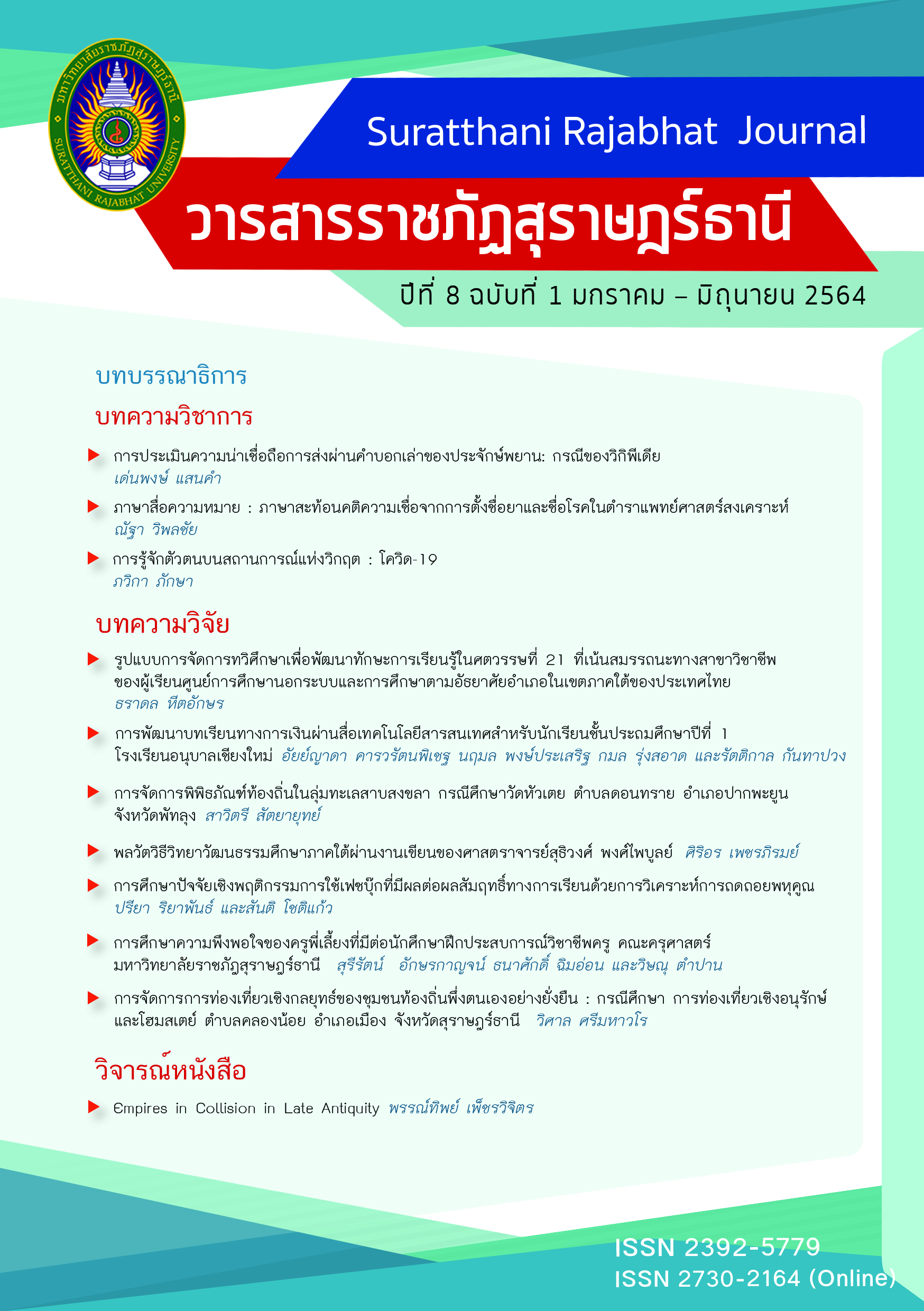Dual Education Management Model to Improve Learning Skills in the 21st Century that Emphasize Professional Competencies of Learners in Non-Formal and Informal Education Centers. In the Southern Region of Thailand
Main Article Content
Abstract
This is mixed methods research. The target groups used in the research were the Non-Formal Education and Informal Education Commission committee in 3 pilot provinces; Ranong, Surat Thani, and Songkhla, with a total number of 408 people. The tools used in the research were the questionnaire form regarding the management of dual education that affects the learning skill development in the 21st century that emphasizes professional competencies of learners of non-formal and informal education centers in the southern region of Thailand, In-depth interview, and the assessment form. The statistics for data analysis are the mean, standard deviation, multiple regression analysis, and content analysis. The results of the research revealed that the dual education management in competency determination (X1) and curriculum development (X2) can jointly predict the development of learning skills in the 21st century that emphasize academic competency. Professional fields of learners from non-formal and informal education centers in the southern region of Thailand were 80.5 percent with statistical significance at the level of .05 as equation = 2.747 + .791 (X1) +.469 (X2). In addition, it is able to determine the management of dual education that is a collection of content, objectives, processes, methods, and evaluations in the management of joint study of vocational and upper secondary education (dual education) of the Ministry of Education. This develops learners at non-formal and informal education centers in Southern Thailand to have the capability of learning in the 21st century at a skill level that can actually do professional work which is the characteristics of graduates that labor markets in the 21st century need; accuracy, possibility, and usefulness at the highest level.
Article Details
References
กระทรวงศึกษาธิการ. (2558). แนวทางการจัดการศึกษาเรียนร่วมกับอาชีวศึกษาและมัธยมศึกษาตอนปลาย (ทวิศึกษา). กระทรวงศึกษาธิการ.
กระทรวงศึกษาธิการ. (2560). กรอบทิศทางแผนการศึกษาแห่งชาติ พ.ศ. 2560 - 2574. สำนักงาน เลขาธิการสภาการศึกษา.
พรทิพย์ ศิริภัทราชัย. (2556). STEM Education กับการพัฒนาทักษะในศตวรรษที่ 21.วารสารนักบริหาร, 33(2). 49-56
พัทยา จันโทกุล. (2555). รูปแบบการบริหารหลักสูตรฐานสมรรถนะที่ตอบสนองกำลังคนระดับประกาศนียบัตรวิชาชีพชั้นสูงประเภทวิชาศิลปกรรมของสถานศึกษาสังกัดสำนักงานคณะกรรมการการอาชีวศึกษา. [ดุษฎีนิพนธ์ศึกษาศาสตรดุษฎีบัณฑิต]. มหาวิทยาลัยอีสเทิร์นเอเชีย.
พูนภัทรา พูลผล. (2554). การพัฒนารูปแบบการบริหารงานวิชาการในสถานศึกษาขั้นพื้นฐานเพื่อเตรียมผู้เรียนสู่ความเป็นพลเมืองโลก. โรงเรียนเพลินพัฒนา.
รัตนา จันทร์รวม. (2560). นวัตกรรมการบริหารโรงเรียนระบบทวิศึกษาตามแนวคิดหลักสูตรการศึกษาเชื่อมโยงสู่อาชีพ. [วิทยานิพนธ์ครุศาสตรดุษฎีบัณฑิต]. จุฬาลงกรณ์มหาวิทยาลัย.
วิจารณ์ พานิช. (2555). วิถีสร้างการเรียนรู้เพื่อศิษย์ในศตวรรษที่ 21. ฝ่ายโรงพิมพ์ บริษัท ตถาตา พับลิเคชั่น จำกัด.
สมชัย วงษ์นายะ และทวนทอง เชาวกีรติพงศ์. (2558). กลยุทธ์การขับเคลื่อนการปฏิรูปการศึกษาในทศวรรษที่สองในสถานศึกษาขั้นพื้นฐานสังกัดสำนักงานเขตพื้นที่การศึกษาประถมศึกษากำแพงเพชรและตาก. วารสารสักทอง, 21(3). 107-123
Donnelly, J. F., and Jenkins, E. W. (2001). Science education: policy, professionalism and change. Sage Publication.
Trilling, B. and Fadel, C. (2009). 21st Century Skills: Learning for Life in Our Times. John Wiley & Sons.


